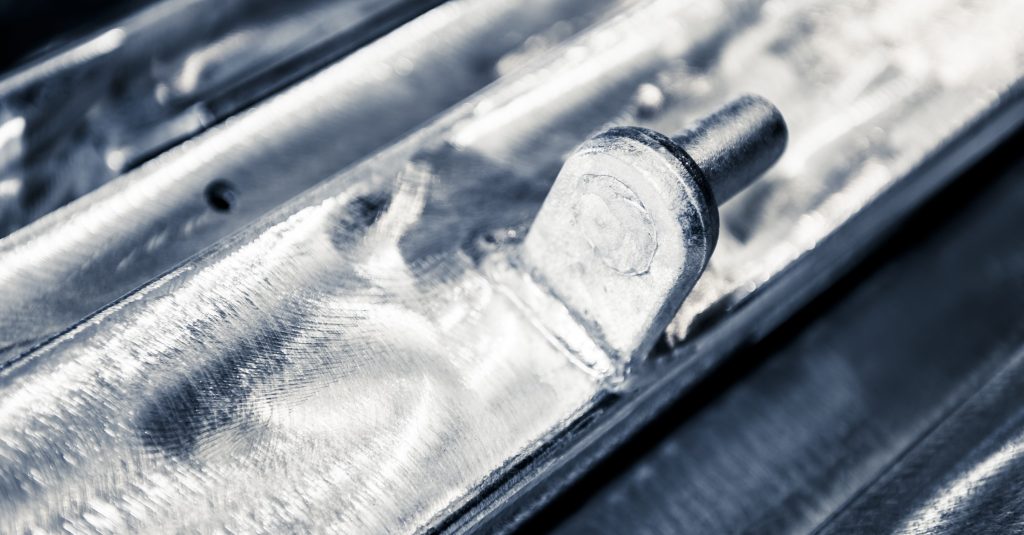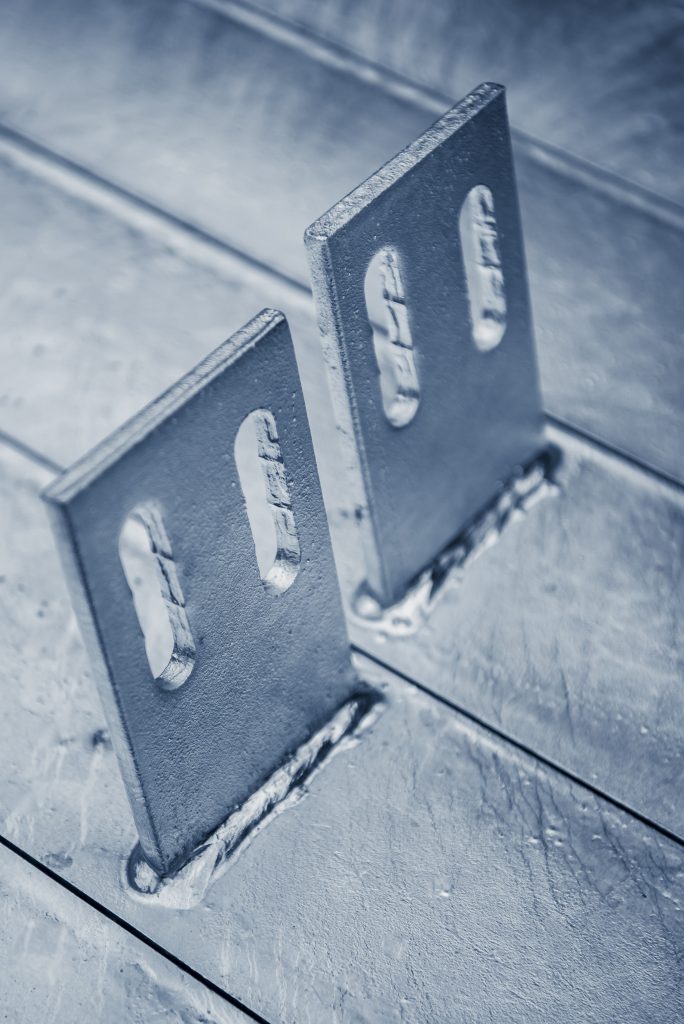Can you weld galvanized steel?
Welding is a versatile and essential skill for steel fabricators. However, you may wonder if it is safe to weld steel after it has been galvanized. Does the zinc coating affect the welding process? Will the welding process ruin the galvanized coating? We explore whether you can weld galvanized steel, and the best practices to do so safely and effectively.

What is galvanized steel?
Prior to welding your galvanized steel, it’s crucial to understand the material you’re working with. Hot dip galvanizing involves dipping steel into a bath of molten zinc, creating galvanized steel. This zinc coating protects steel against corrosion, increasing its longevity and making it an ideal choice for fabricators.
Ungalvanized steel does not have this layer of zinc over it, which makes it more susceptible to corrosion. However, the zinc can cause problems when welding steel fabrications.
What happens when you weld galvanized steel?
When you expose galvanized steel to high temperatures during welding, the zinc coating evaporates, releasing toxic zinc oxide fumes and creating health and safety hazards.
Inhaling zinc oxide fumes can cause symptoms such as nausea, chills, fever, and muscle aches. These symptoms together are sometimes known as “metal fume fever”. Prolonged exposure to zinc fumes can cause serious health issues. Welding galvanized steel can also result in increased spatter and smoke, which can be hazardous and affect the quality of your work environment.
The quality of the welding job can also be affected. The presence of zinc during welding can create defects in the weld, such as porosity or inclusions, which weaken the joint.
Can you weld galvanized steel safely?
Although not recommended, you can still weld galvanized steel. However, it requires careful preparation and precautions to ensure your safety and the quality of the weld. Here are some steps to follow:
- Proper ventilation: Welding should always be done in a well-ventilated area, but it’s even more crucial when working with galvanized steel. Use exhaust fans, open doors, or consider outdoor welding to minimise exposure to zinc fumes.
- Wear appropriate safety gear: Ensure you are wearing appropriate personal protective equipment (PPE), including a welding helmet, gloves, and respiratory protection.
- Clean the surface: Before welding, grind away the zinc coating from the areas you intend to weld. This prevents the release of zinc fumes and ensures better weld quality.
- Use low heat: Reduce heat input by using lower amperage and voltage settings on your welding equipment. This helps minimise the evaporation of zinc.

Should I weld steel before galvanizing?
You can avoid emitting zinc fumes if you weld steel before galvanizing, reducing the side effects associated with inhaling zinc fumes. However, this doesn’t mean there aren’t health and safety risks with galvanizing steel that has already been welded. Fabricators need to ensure that their steel is correctly vented before sending to their local hot dip galvanizing site. Incorrectly venting your steel can have explosive consequences.
It’s also important to ensure you weld your steel together correctly by leaving seam gaps. Without gaps, air becomes trapped in the weld joint, causing pressure between the two welded pieces. This pressure builds up until the fabrication forcible separates at high speed. To avoid this, leave seam gaps between the steel pieces so that air can escape and avoid pressure building.
If in doubt, you can download our venting tips and tricks guide here.
However, it is important to note that the welded section will no longer be corrosion resistant after welding as the zinc coating is removed, leaving uncoated steel sections. Therefore, the item will likely have to be re-galvanized after welding to ensure it is protected.
To conclude, you can weld galvanized steel, but it requires extra care and precautions due to the zinc coating created from galvanizing. Safety should always be a top priority when working with any welding project, and this is especially true when welding galvanized steel. Proper ventilation, protective gear, and surface preparation are key to ensuring you remain safe when welding steel.
Ask your local galvanizing company if you are unsure about welding or venting steel.